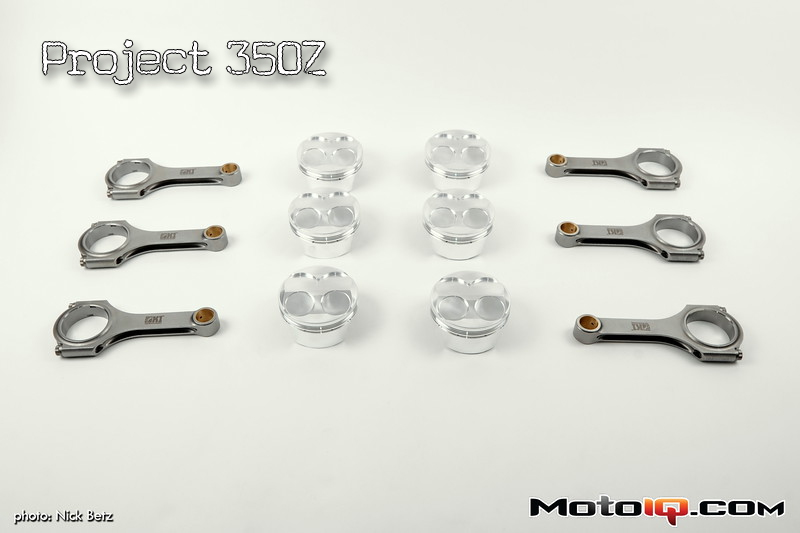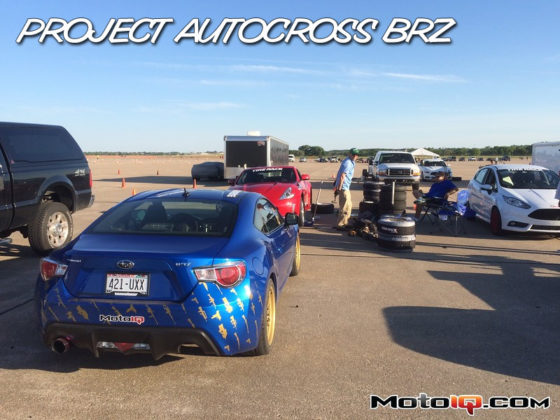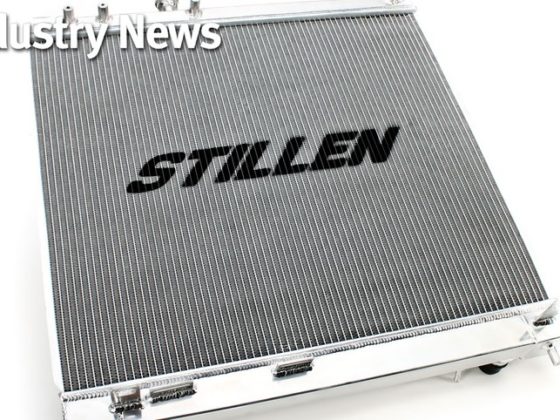,
 The underside of the JE Piston revels a lot of undercrown milling. The forging blank had some excess material because the blank must be able to safely support a dished low compression forged piston. With a high compression domed crown, there is some excess material and JE pared away every excess gram with their CNC machines to make the lightest possible piston. You can even see some fancy lateral milling! 5-axis CNC work anyone?
The underside of the JE Piston revels a lot of undercrown milling. The forging blank had some excess material because the blank must be able to safely support a dished low compression forged piston. With a high compression domed crown, there is some excess material and JE pared away every excess gram with their CNC machines to make the lightest possible piston. You can even see some fancy lateral milling! 5-axis CNC work anyone? JE has updated their VQ shelf piston to use the newer FSR strut type forging. The FSR forging uses reduced slipper skirts for less friction, an advanced cam design to minimize scuffing and noise and a strut type pin boss with reinforcing buttresses for strength with reduced weight over the previous full skirted designs.
JE has updated their VQ shelf piston to use the newer FSR strut type forging. The FSR forging uses reduced slipper skirts for less friction, an advanced cam design to minimize scuffing and noise and a strut type pin boss with reinforcing buttresses for strength with reduced weight over the previous full skirted designs. The ring grooves are unremarkable with the exception of a pressure equalization groove between the first and second compression rings. The groove acts like a pressure reservoir to aid second ring seal. It also acts like a buffer for detonation waves and reduces flutter under those conditions. To reduce friction and increase piston life, we WPC treated the pistons, particularly in the ring goove area and on the skirts.
The ring grooves are unremarkable with the exception of a pressure equalization groove between the first and second compression rings. The groove acts like a pressure reservoir to aid second ring seal. It also acts like a buffer for detonation waves and reduces flutter under those conditions. To reduce friction and increase piston life, we WPC treated the pistons, particularly in the ring goove area and on the skirts. JE’s provided rings are a low tension, low inertia lightweight design. This reduces both operating friction and flutter caused by ring “float” about TDC as the rings change direction.
JE’s provided rings are a low tension, low inertia lightweight design. This reduces both operating friction and flutter caused by ring “float” about TDC as the rings change direction. The number one compression ring is a 1.1mm thin profile steel part that is chrome faced for long life.
The number one compression ring is a 1.1mm thin profile steel part that is chrome faced for long life. The number 2 ring is a 1.2mm iron ring for quick seating and good initial seal with a Napier profile. The Napier profile has a hooked shape as seen here which helps scrape oil off the cylinder wall despite low tension reducing oil consumption particularly at higher rpms.
The number 2 ring is a 1.2mm iron ring for quick seating and good initial seal with a Napier profile. The Napier profile has a hooked shape as seen here which helps scrape oil off the cylinder wall despite low tension reducing oil consumption particularly at higher rpms.


